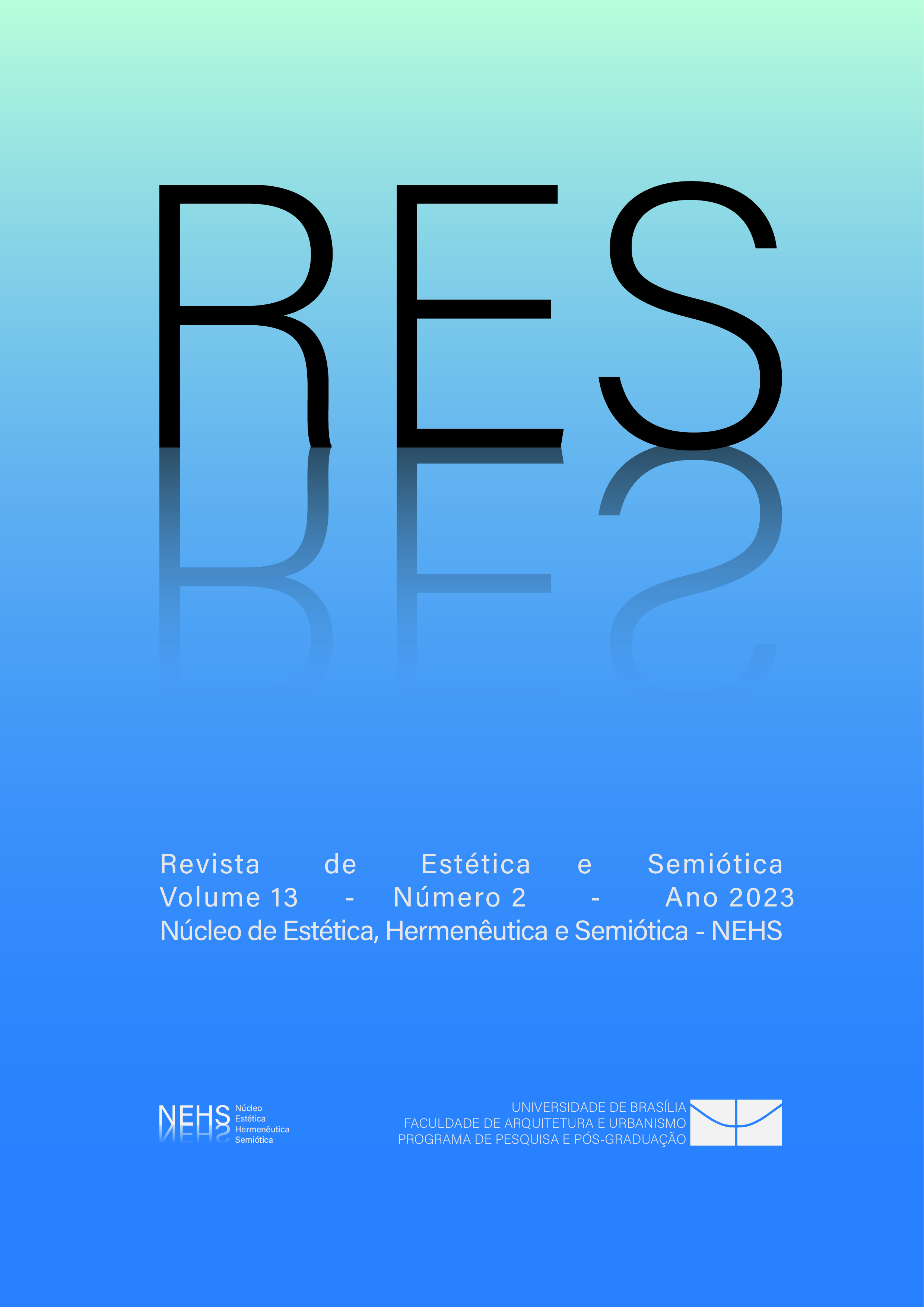Illustration and playfulness in the representation of the architectural project
DOI:
https://doi.org/10.18830/issn2238-362X.v13.n2.2023.10Keywords:
Representation; Architecture; Playfulness; CommunicationAbstract
Architectural representation stands as the most potent communicative conduit between the professional and the client, as it is through this medium that the conceptual design takes shape, conveying the final message. Thus, the central focus of this article
is to analyze how non-conventional representational methods can serve as significant tools of connection between the architectural work and the viewer. Given that the use of images as a communicative instrument has been witnessed since the dawn of humanity,
from ancient cave paintings to various forms of modern art. This entire process of message conveyance is executed through signs and meanings that, when applied effectively, as seen in the construction of the Office of Metropolitan Architecture’s project “The
Strip,” engender in the viewer a speculative gaze generated by the interpretation of visual codes within a reading system. Therefore, through a literature review, this research aims to deliberate on how the utilization of ludic tools in the field of architecture is of paramount importance in imparting social values and directing the recipient towards the metaphorical realm of the project. In summary, the study and comprehension of unconventional visual representation are of utmost significance in attaining the fullness of the architectural message, transcending the realm of technical constructive characters.
Downloads
References
REFERÊNCIAS:
ANDRÉ, S. I. F. Arquitetura e ilustração - diálogo de duas partes na obra de Madelon Vriesendorp. A cidade,
o Porto e a arte: residência artística em Sines. 2016. Disponível em: <https://repositorio.iscte-iul.pt/handle/10071/13221>. Acesso em: 03/09/2023.
CABEZAS-GARCÍA, G.; GALERA-RODRÍGUEZ, A. El collage como medio de expresión gráfico plástico
ante los bloqueos creativos. X Jornadas sobre Innovación Docente en Arquitectura,2022. p. 488 - 501,
/11/2022.
COLI, J. O que é arte?. São Paulo (Sp): Brasiliense, 1995.
DE, L.; HISTÓRICA, P.; BAJTIN, QUOT; “Las Formas De Tiempo Y Del Cronotopo En “Las Formas De Tiempo Y Del Cronotopo En La Novela. Ensayos De Poética Histórica”.1989. Disponível em: <https://webs.ucm. es/info/guias/obras/discurso/Tema%205c.%20Bajtin.% 20Cronotropo%20y%20novela.pdf>. Acesso em: 03/09/2023
FERRARA, Lucrécia D’Alessio. A estratégia dos signos. 2a edição. São Paulo, Perspectiva, 2009.
BUENO, Antonio García et al. La Semiótica En La Arquitectura: El Lenguaje Arquitectónico. 2018. Granada,
Disponível em: https://digibug.ugr.es/handle/ 10481/63248. Acesso em: 03/09/2023.
GONZÁLEZ DE GOMEZ, M. N. (1993). A representação do conhecimento e o conhecimento da representação: algumas questões epistemológicas. Ciência Da Informação, Brasil, v.22(3), 1993. p. 217-222. https:// doi.org/10.18225/ci.inf.v22i3.479
GROPIUS, W.; P MORTON SHAND. The new architecture and the Bauhaus. Cambridge, Mass.: M.I.T. Press, 1998.
INGOLD, T. Chega de etnografia! A educação da atenção como propósito da antropologia. Educação, v. 39, n. 3, p. 404–411, 22 dez. 2016.
PALLASMAA, J. A imagem corporificada: imaginação e imaginário na arquitetura. Porto Alegre, Bookman, 2013.
LEITÃO, L. Uma relação especular: anotações sobre a dimensão imaginária da arquitetura. Risco Revista de Pesquisa em Arquitetura e Urbanismo, Online, v.01(13), 2011.p. 58-64. Disponível em: https://www.revistas.usp.br/risco/article/view/44813 .Acesso em: 05/09/2023.
MARIA, S. Platão e Bion: Do mundo das ideias aos pensamentos sem pensador. Ispa.pt, 2023.
PLATÃO. A República. 7. ed. Trad. Maria Helena da Rocha Pereira. Lisboa: Fundação Calouste Gulbenkian, 1993.
RESTREPO, M. La semiótica de Charles S. Peirce. Signo y Pensamiento, v. 9, n. 16, p. 27–46, 1990. Disponível em: https://revistas.javeriana.edu.co/index.php/signoypensamiento/article/view/3487. Acesso em:28 sep. 2023.
SÁNCHEZ MEDRANO, G. Los códigos visuales más reconocidos por las personas. 2014 Disponível: observatoriocultural.udgvirtual.udg.mx. Acesso 03/09/2023.
SALIGNON, B. La cité n’appartient à personne. Theetete,1997.
SARMENTO, M. J. Metodologias visuais em ciências sociais e da educação, Online. Disponível: https://repositorium.sdum.uminho.pt/handle/1822/79683.135. Acesso 03/09/2023
SÍLVIA SCHNAIDER. Composição visual. 1ª edição. InterSaberes, 2022.
VILÉM FLUSSER; ABI-SÂMARAR.; CARDOSO, R. O Mundo Codificado : por uma filosofia do design e da comunicaçãção. São Paulo: Cosac Naify, 2008.
YORK, N. MoMA Highlights 350 Works from The Museum of Modern Art. Disponível: <https://www.moma.org/d/pdfs/W1siZiIsIjIwMTkvMDEvMTQvMTRyNjA4YzNiZl9Nb01BSGlnaGxpZ2h0czEzX1BSRVZJRVdfUkVWLnBkZiJdXQ/MoMAHighlights13_PREVIEW_REV.pdf?sha=4b767b77c21f53e4>. Acesso 03/09/2023 ILUSTRAÇÃO
Downloads
Published
How to Cite
Issue
Section
License
Copyright (c) 2023 MOACIR MOREIRA MOREIRA

This work is licensed under a Creative Commons Attribution-NonCommercial 4.0 International License.




